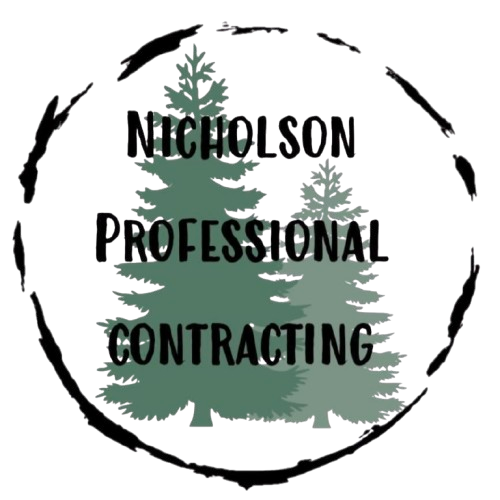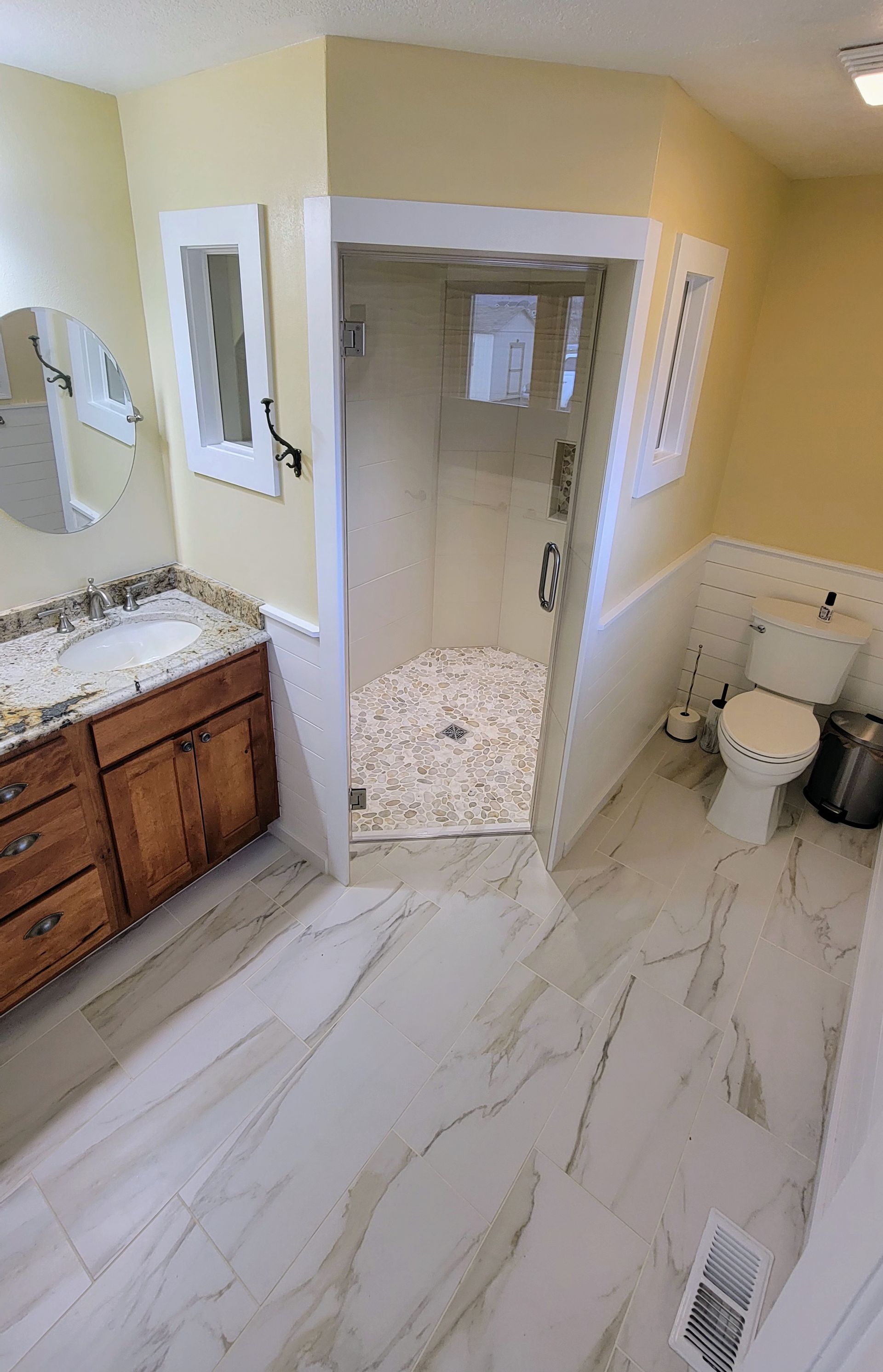Deck Building in Montana: Design Ideas for Every Season
Montana's spectacular natural environment practically demands outdoor living spaces where families can gather, entertain, and soak in mountain views. Whether you live in Missoula, Hamilton, Lolo, or anywhere in the Bitterroot Valley, designing the perfect deck for your property requires balancing aesthetic appeal with functionality across all four seasons. From snow-laden winters to sun-drenched summers, your deck should enhance your home's value while providing a durable outdoor retreat for years to come.
Understanding Montana Weather Challenges
Montana's climate presents unique challenges for deck construction that differ significantly from milder regions. Temperature swings from below-zero winters to ninety-degree summers, heavy snow loads, intense UV exposure at elevation, and dry conditions that can cause wood movement all influence design and material decisions.
Winter snow loads in Montana vary by elevation and location but typically range from thirty to over one hundred pounds per square foot. Your deck must be engineered to handle these loads safely without sagging or structural damage. This requires proper joist spacing, adequate support posts, and appropriate beam sizing determined by professional calculation.
Temperature fluctuations cause materials to expand and contract, potentially leading to warping, splitting, or fastener failure in poorly designed decks. Quality construction accounts for these movements through proper fastening techniques, appropriate spacing, and material selection that minimizes thermal expansion issues.
Material Selection for Montana Decks
Choosing deck materials ranks among the most important decisions you will make, directly impacting durability, maintenance requirements, and long-term appearance. Montana's harsh conditions demand materials that can withstand extreme weather while maintaining beauty and structural integrity.
Pressure-treated lumber remains a cost-effective foundation material that performs well in Montana's climate when properly maintained. Modern pressure treatment creates barriers against rot and insect damage while the material naturally expands and contracts with temperature changes. Regular sealing and staining protect pressure-treated decks from weathering and extend their lifespan significantly.
Cedar and redwood offer natural beauty and inherent resistance to decay. These premium wood options develop attractive silver-gray patinas when left untreated or maintain rich natural tones with regular sealing. Cedar works particularly well in Montana because it naturally resists moisture damage and insect infestation while providing authentic mountain aesthetic that complements log homes and rustic architecture.
Composite decking has gained popularity among Montana homeowners seeking low-maintenance alternatives to wood. Modern composites resist fading, splitting, and moisture damage while requiring minimal upkeep. Quality composite materials perform well in extreme temperatures and come in various colors and textures that mimic natural wood grain.
Design Ideas for Year-Round Enjoyment
Montana decks should be designed for use beyond just summer months. Thoughtful planning creates spaces that remain functional and inviting even when temperatures drop, extending your outdoor living season significantly.
Covered deck areas provide shelter from summer sun and protection from rain and snow. Solid roof covers allow year-round use while open pergolas offer partial shade and architectural interest. Many Montana homeowners opt for hybrid designs with partially covered sections that provide flexibility for different weather conditions and activities.
Outdoor heating extends deck usability deep into fall and even winter. Fire pits, fire tables, or outdoor fireplaces create gathering points while providing warmth. Infrared heaters mounted overhead deliver instant warmth without taking up valuable deck space.
Built-in seating maximizes deck space while providing permanent seating that withstands Montana weather better than movable furniture. Benches with storage underneath serve double duty, offering seating and weather-protected storage for cushions, grilling accessories, or outdoor games.
Maximizing Mountain Views
One of Montana's greatest assets is breathtaking scenery, and your deck design should showcase rather than obscure these views. Strategic planning ensures your outdoor space frames mountain vistas, river valleys, or forest landscapes beautifully.
Glass panel railings provide unobstructed views while meeting safety requirements. These modern systems use tempered glass panels secured in aluminum or stainless steel frames, creating transparent barriers that protect without blocking scenery. Glass railings work particularly well on elevated decks where views extend for miles.
Cable railings offer another low-profile option that maintains sight lines. Stainless steel cables strung horizontally between posts create minimal visual obstruction while providing required safety barriers. This system works well with both modern and rustic aesthetics depending on post materials and design.
Multi-level deck designs create distinct zones for different activities while working with sloped terrain common in Montana properties. Upper levels might focus on dining and entertaining with spectacular views, while lower levels provide more intimate spaces or access to yard areas. These transitions add architectural interest while maximizing usable outdoor space.
Outdoor Kitchens and Dining Areas
Montana's outdoor lifestyle practically demands cooking and dining spaces on decks. From casual family meals to entertaining friends, well-planned outdoor kitchens extend your living space while taking advantage of beautiful weather.
Built-in grills anchored to deck surfaces provide stable cooking platforms and can be protected during winter months. Many Montana homeowners invest in quality gas grills with multiple burners, side burners, and warming racks that handle everything from weeknight dinners to large gatherings.
Counter space for food preparation and serving makes outdoor cooking more practical. Weather-resistant countertops made from granite, concrete, or tile provide durable work surfaces that withstand Montana conditions. Include electrical outlets for small appliances and task lighting for evening cooking.
Dining areas should accommodate your typical group size with room for expansion during gatherings. Built-in dining tables or permanent furniture arrangements create dedicated spaces while removable options offer flexibility. Consider covering dining areas to extend usability during light rain or intense sun.
Lighting for Safety and Ambiance
Proper lighting transforms decks from daytime-only spaces into evening retreats while ensuring safe navigation after dark. Layered lighting approaches combine functional illumination with atmospheric effects.
Step lighting prevents trips and falls while adding decorative elements. LED strips installed under stair nosings or small fixtures mounted on risers illuminate walking surfaces without creating glare. These safety features become essential during Montana's long winter evenings when darkness arrives early.
Post cap lights installed atop railing posts provide ambient lighting while defining deck perimeters. Solar-powered options eliminate wiring concerns while LED versions offer energy efficiency and long bulb life. Choose warm color temperatures that create inviting atmospheres rather than harsh white light.
String lights overhead create magical ambiance perfect for evening entertaining. Cafe-style Edison bulbs strung between posts or wrapped around pergola beams provide soft, flattering light that encourages lingering outdoors after sunset. These decorative lights have become signature elements of Montana outdoor spaces.
Privacy Solutions
While Montana offers abundant space, certain situations call for privacy screens that create intimate outdoor rooms without completely blocking views or airflow. Strategic placement maintains openness while defining boundaries.
Lattice panels attached to railings or posts provide semi-transparent screens that filter views while allowing breezes. These traditional options work well painted or stained to match deck finishes and support climbing plants that add natural beauty and additional privacy.
Vertical garden walls serve triple duty as privacy screens, growing spaces, and living art. Mount planters on existing railings or install dedicated vertical structures that support herbs, flowers, or trailing plants. These green walls soften hard deck surfaces while creating privacy barriers that evolve through seasons.
Partial walls or built-in planters at deck edges provide substantial privacy without requiring full enclosures. These permanent features can incorporate storage, seating, or decorative elements while defining space and blocking sight lines where needed.
Connecting Indoor and Outdoor Spaces
Seamless transitions between home interiors and deck areas enhance flow and make outdoor spaces feel like natural extensions of living areas. Thoughtful planning creates connections that work year-round.
French doors or sliding glass systems provide wide openings that blur boundaries between inside and outside. Multi-panel systems can open entire walls during summer while providing weather protection during colder months. These connections work particularly well from kitchens or living areas.
Matching deck heights to interior floor levels eliminates steps and creates smooth transitions. This approach improves accessibility and makes moving between spaces effortless, particularly when carrying food, drinks, or other items during entertaining.
Consistent design language between indoor and outdoor spaces creates visual continuity. Consider extending interior color palettes, using complementary materials, or repeating architectural details that tie spaces together aesthetically.
Maintenance Considerations
Montana's climate demands regular deck maintenance to ensure longevity and safety. Understanding maintenance requirements helps you choose appropriate materials and develop care routines that protect your investment.
Wood decks require annual cleaning and sealing to prevent moisture damage, UV degradation, and insect infestation. Spring represents ideal timing for deck maintenance, allowing you to address winter damage and prepare surfaces for summer use. Power washing removes accumulated dirt and mildew while opening wood pores for sealer absorption.
Composite decking needs less maintenance but benefits from periodic cleaning to prevent mold and mildew growth in shaded areas. Soap and water or specialized composite cleaners remove buildup without damaging surfaces. Check manufacturer recommendations for approved cleaning methods.
Structural inspections should occur annually, checking for loose fasteners, damaged boards, unstable railings, or foundation settling. Address issues promptly to prevent small problems from becoming major repairs. Pay particular attention after harsh winters when freeze-thaw cycles can affect structural integrity.
Building Code Compliance
Montana building codes ensure deck safety through specific requirements for structural design, railings, stairs, and footings. Working with licensed contractors familiar with local codes prevents costly mistakes and ensures your deck passes inspection.
Railing height requirements typically mandate minimum heights of 36 inches for residential decks, with spacing between balusters not exceeding 4 inches to prevent children from slipping through. Stairs require handrails when exceeding certain heights and must meet specific tread and riser dimensions.
Footing depth must extend below frost lines to prevent frost heaving that can shift or damage deck structures. In Montana, frost depths vary by location but typically require footings 42 to 48 inches deep. Proper footings ensure deck stability through freeze-thaw cycles.
Permits are required for most deck construction in Montana. The permitting process ensures designs meet structural requirements and safety standards while providing documentation of proper construction for future property transactions.
Seasonal Preparation
Preparing your deck for seasonal changes extends its lifespan and maintains safety throughout the year. Regular seasonal maintenance addresses specific challenges each season presents.
Fall preparation includes thorough cleaning, removal of leaves and debris, checking drainage, and applying protective sealers before winter arrives. Store furniture and accessories in weather-protected areas or cover with weatherproof materials. Trim overhanging branches that could deposit snow or ice on deck surfaces.
Winter maintenance involves regular snow removal to prevent excessive load accumulation. Use plastic shovels rather than metal to avoid surface damage. Apply ice melt products safe for deck materials, avoiding rock salt that can damage wood and corrode metal fasteners.
Spring marks the time for comprehensive inspections and repairs. Check for winter damage, replace damaged boards, tighten loose fasteners, and apply fresh sealer or stain. Clean thoroughly to remove winter accumulation and prepare for outdoor season.
Ready to Build Your Montana Deck?
Creating the perfect deck for Montana living requires understanding our unique climate challenges while designing spaces that maximize outdoor enjoyment year-round. From material selection to seasonal considerations, every decision impacts how well your deck serves your family for decades to come.
Contact Nicholson Professional Contracting for a free consultation on your deck project. Our experience with Montana construction and deep understanding of local conditions ensures your deck will be beautiful, functional, and built to last through everything Montana weather delivers.



